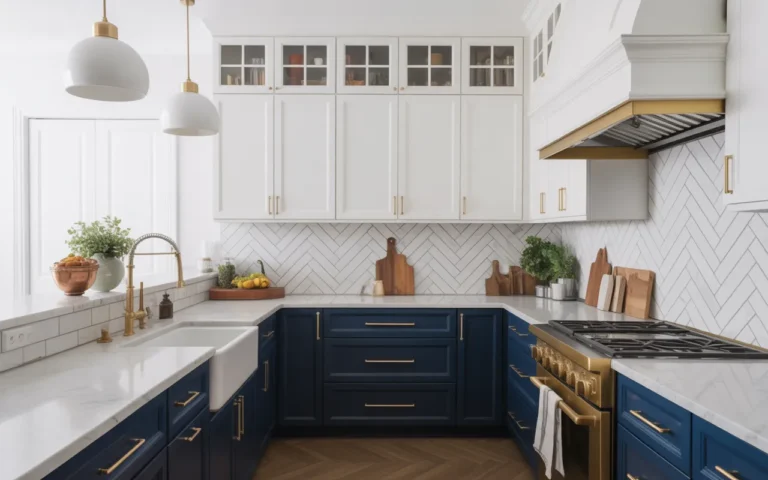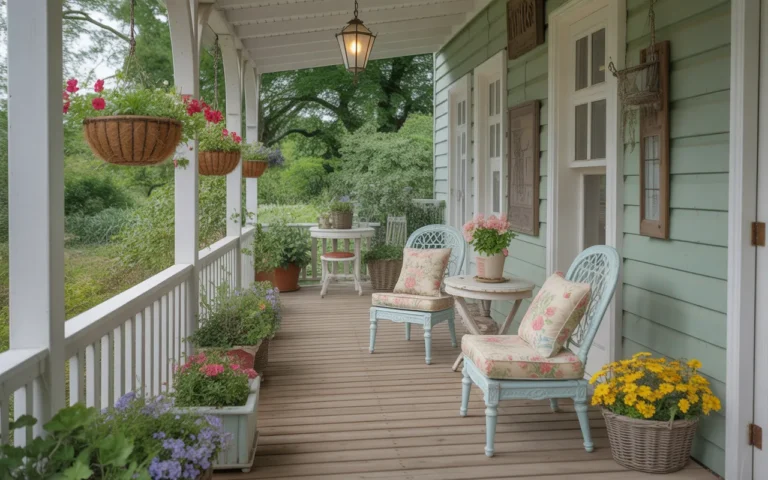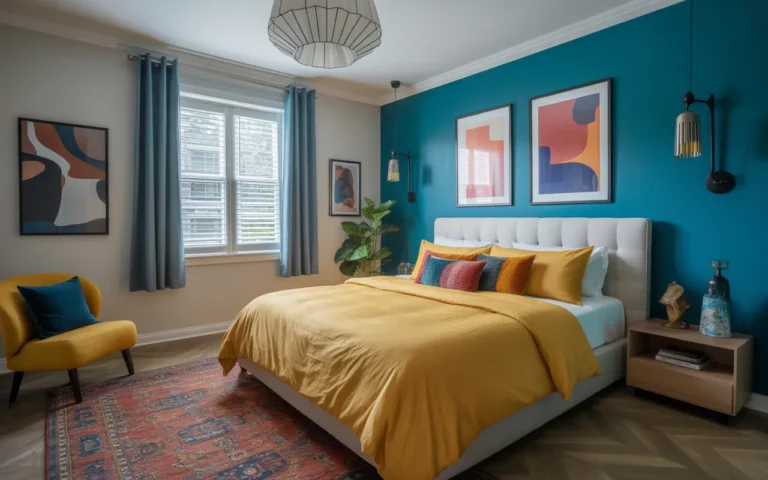Minimalist Zen Style – 23 Japandi Living Room Ideas

Looking to create a living room that feels calm, warm, and effortlessly stylish? Japandi design is the perfect fusion of Japanese minimalism and Scandinavian coziness. It focuses on simplicity, natural textures, and a soothing color palette that makes your space feel open yet inviting. Whether you love clean lines or soft organic details, these 23 Japandi living room ideas will inspire a mindful and modern retreat where function meets beauty — and every detail radiates harmony and peace.
Neutral Palette Harmony
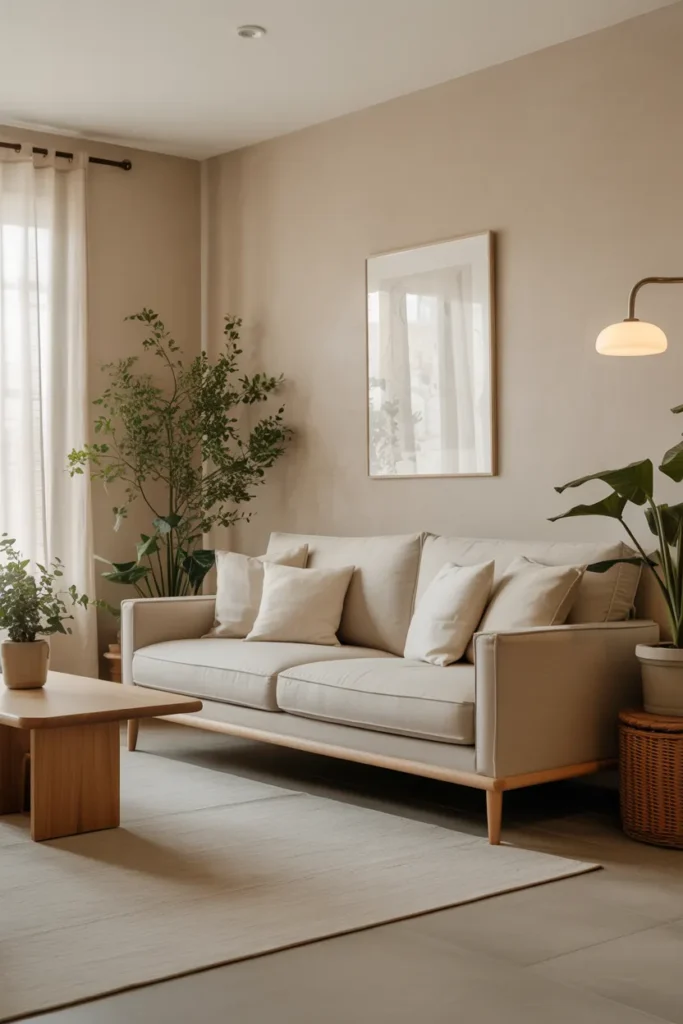
This neutral Japandi living room radiates calm through simplicity. Soft beige tones and light woods create a seamless balance between Scandinavian coziness and Japanese restraint. Each piece of furniture feels intentional, promoting mindful living and visual serenity.
For a similar aesthetic, choose neutral textiles like linen and cotton, and keep accessories minimal. A simple coffee table, woven rug, and small indoor plants can elevate the space without clutter. The result is an inviting, grounded retreat that embraces both warmth and minimalism.
Light Wood Serenity

Light wood is the cornerstone of Japandi design, evoking warmth and calm. In this living room, soft oak flooring pairs beautifully with minimalist furniture, enhancing the room’s organic flow. The natural light accentuates textures and creates an open, airy ambiance.
To recreate this look, select light-toned woods and pair them with soft whites and sandy hues. Keep furniture low and functional, allowing negative space to shine. Add a single statement plant or ceramic vase to complete the serene aesthetic.
Soft Textures and Natural Layers

Soft textures bring warmth to minimal Japandi interiors. The wool rug and linen accents introduce depth while keeping the space light and breathable. Each element adds to the sense of understated comfort, blending form and function beautifully.
Layering natural materials like cotton, linen, and wool creates balance in minimalist design. Keep patterns subtle and tones muted to maintain harmony. The result is a living room that feels both welcoming and soothing, without losing its refined simplicity.
Greenery and Zen Vibes

Adding greenery is a simple yet powerful way to bring life to a Japandi living room. Plants like bonsai, ferns, or snake plants introduce organic shapes that soften the structured lines of minimalist decor. They remind us of nature’s calming influence.
Use neutral ceramic pots or bamboo planters to keep the look cohesive. Group small plants together or feature one tall indoor tree for a statement. The goal is balance — letting nature breathe within your minimalist space.
Earthy Tones and Warm Wood
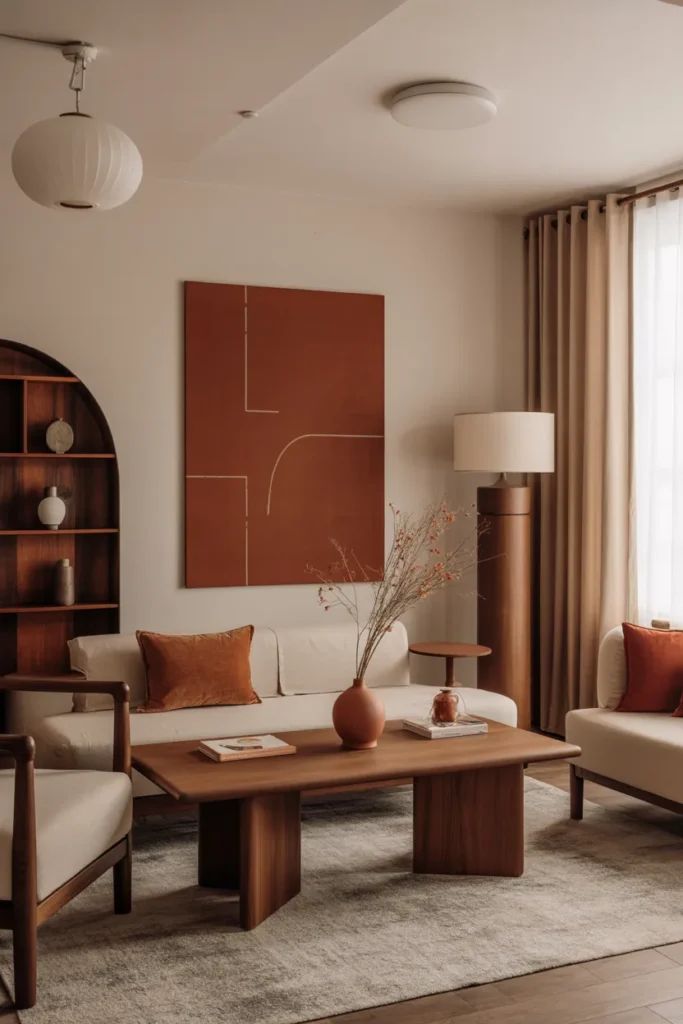
Earthy tones give Japandi spaces a sense of grounded tranquility. The warm wood and muted terracotta hues create a cozy atmosphere that still feels minimalist and refined. This color scheme mirrors nature’s effortless beauty.
Incorporate clay vases, jute rugs, and amber-toned cushions for subtle richness. Mix matte and soft finishes for depth, but keep the decor uncluttered. The harmony of texture and tone defines the Japandi balance between serenity and warmth.
Minimalist Black Accents

Black accents create visual structure in Japandi interiors. In this design, slim black frames and table legs offer definition without overwhelming the calm palette. It’s a subtle nod to modern minimalism.
Use black sparingly — through lighting fixtures, picture frames, or hardware — to create balance. The contrast keeps the room dynamic while maintaining the serene Japandi mood of simplicity and clarity.
Open Space Concept
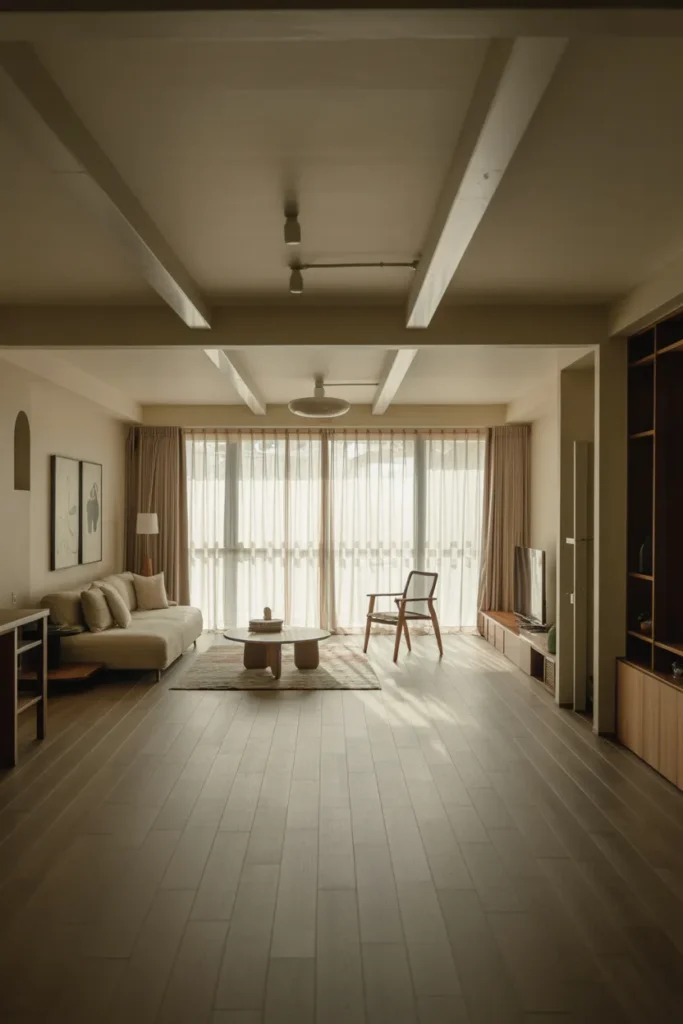
Japandi design celebrates open space and intentional emptiness. This airy layout allows light to become a design element itself, creating a tranquil and functional atmosphere.
Avoid overcrowding. Choose fewer, high-quality pieces that serve multiple purposes. The beauty of open space is that it invites relaxation, mindfulness, and a deeper appreciation for simplicity.
Soft Lighting Glow

Lighting plays a huge role in setting a Japandi mood. Soft, diffused lighting adds warmth and depth, emphasizing the room’s organic materials and gentle lines.
Choose paper, fabric, or frosted glass shades for a diffused glow. Layer ambient and task lighting to create balance. The result is a space that feels peaceful both day and night.
Low Furniture Style

Low furniture creates a grounded, calming energy that’s essential to Japandi design. This arrangement feels intimate yet spacious, emphasizing simplicity and connection to the earth.
Opt for modular sofas, low benches, or tatami-inspired seating. Keep lines clean and finishes matte. This design encourages slower living and mindful presence.
Scandinavian Simplicity Meets Zen Calm
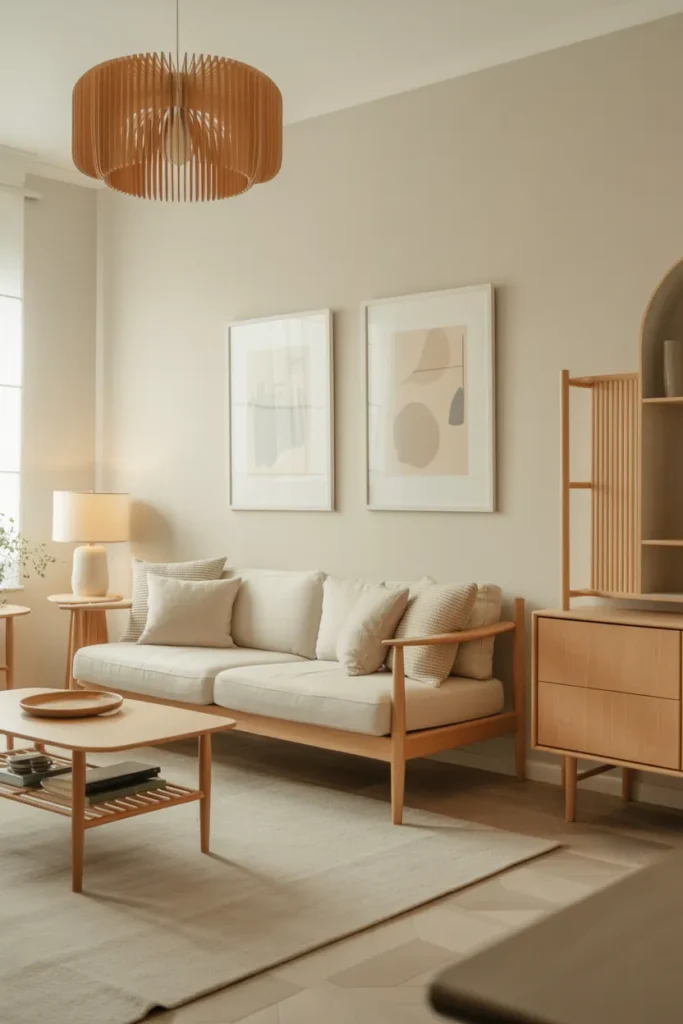
This design captures the essence of Japandi — the perfect union of Nordic simplicity and Japanese mindfulness. The uncluttered layout and neutral palette make the room both functional and soothing, inviting relaxation through simplicity.
Combine Scandinavian practicality with Japanese restraint. Choose versatile pieces with simple forms, layer cozy fabrics, and let negative space breathe. The harmony of both worlds creates a timeless, grounded atmosphere.
Tatami-Inspired Tranquility
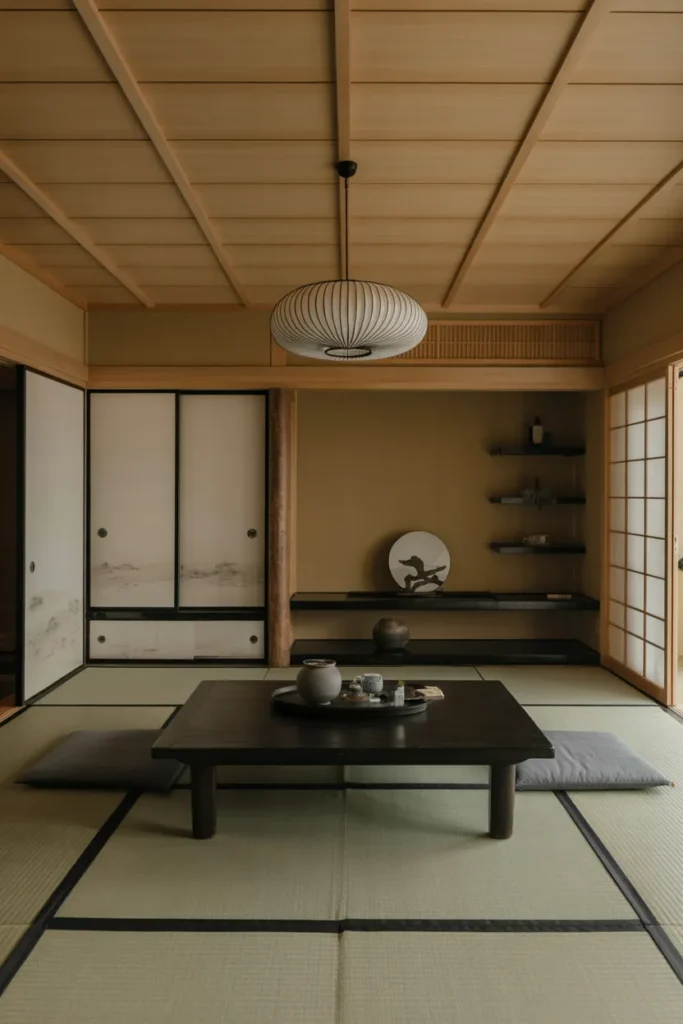
Tatami mats are a cornerstone of Japanese interiors, offering texture and comfort underfoot. In this Japandi space, they set the tone for peaceful living and connect the home to tradition and nature.
Pair tatami flooring with neutral walls and minimalist wooden accents. Add a few woven cushions and natural fabrics for warmth. This design embodies the “less is more” philosophy central to Japandi style.
Stone and Wood Harmony
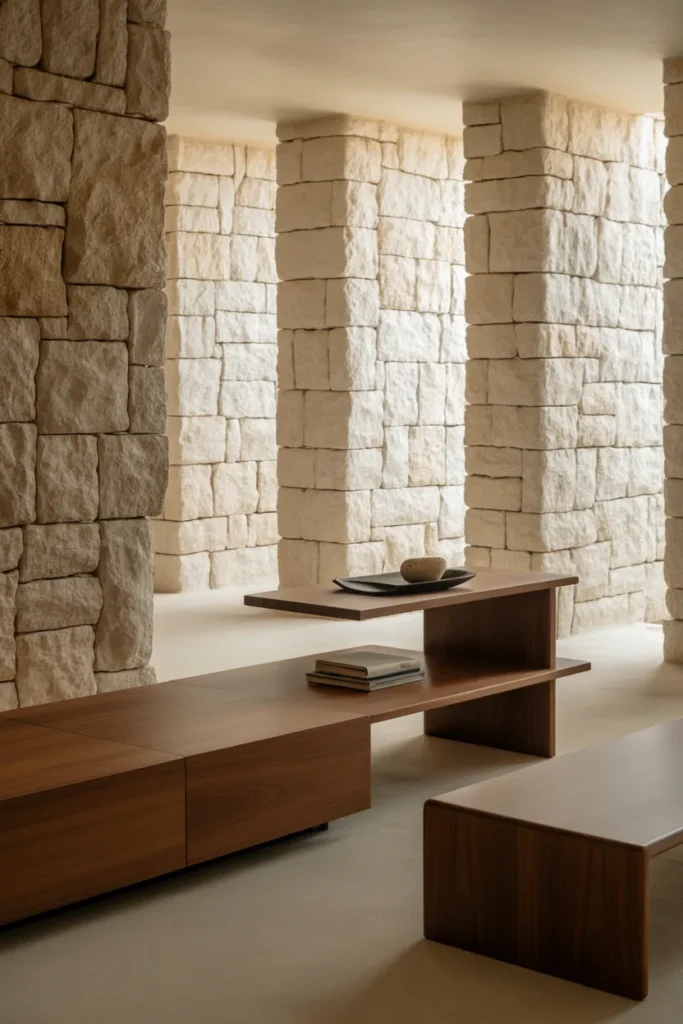
Stone and wood together bring a sense of organic calm. The natural stone adds rugged charm, while the warm wood tones soften the space, making it feel both strong and tranquil.
Incorporate stone through accent walls or decor elements like vases or tables. Balance it with light oak or ash wood finishes to maintain harmony. The mix reflects Japandi’s love of nature in every form.
Cozy Minimalism Corner
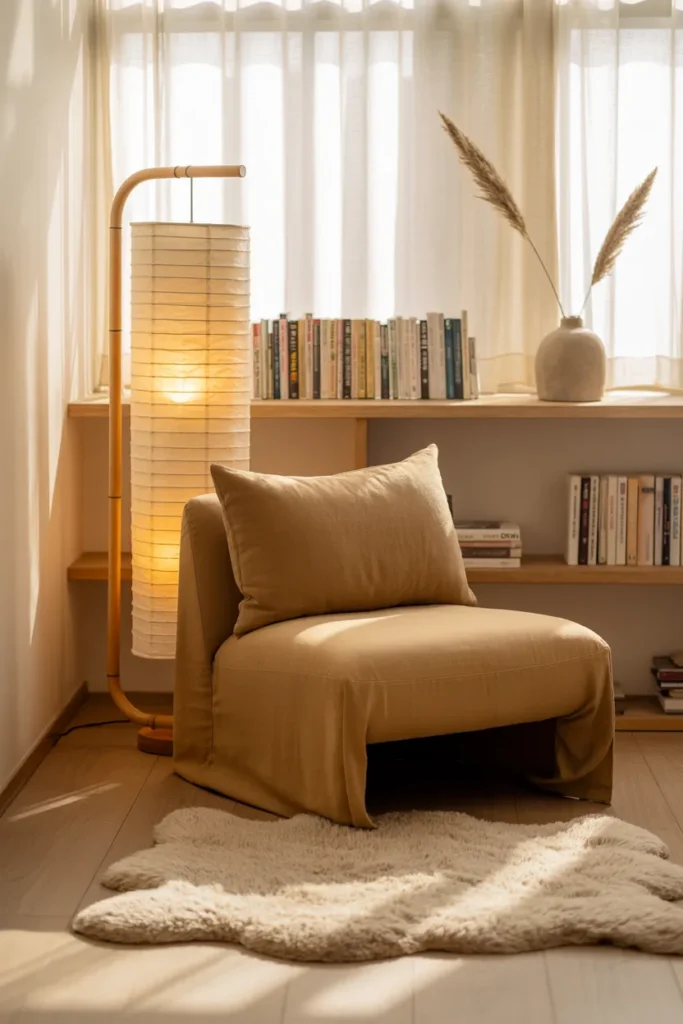
Even small spaces can embody Japandi style. This cozy corner shows how intentional design and minimal elements can create a peaceful retreat for reflection or reading.
Keep the color palette simple and rely on texture to add depth. A comfy chair, warm lighting, and a small plant can transform an unused corner into a mindful sanctuary.
Natural Light and Open Windows

Natural light is a defining feature of Japandi interiors. It softens the room’s edges and brings out the organic tones of wood, fabric, and plants.
Avoid heavy drapes — use sheer curtains to filter sunlight gently. Position seating to take advantage of daylight, creating a balanced and uplifting environment.
Minimal Wall Art Elegance

Wall art in Japandi design is understated but meaningful. A few well-chosen pieces add personality while maintaining harmony with the rest of the decor.
Choose neutral or nature-inspired prints with clean lines. Space them generously to preserve an uncluttered feel. Subtle, balanced art enhances tranquility rather than distracts from it.
Soft Gray Neutrals
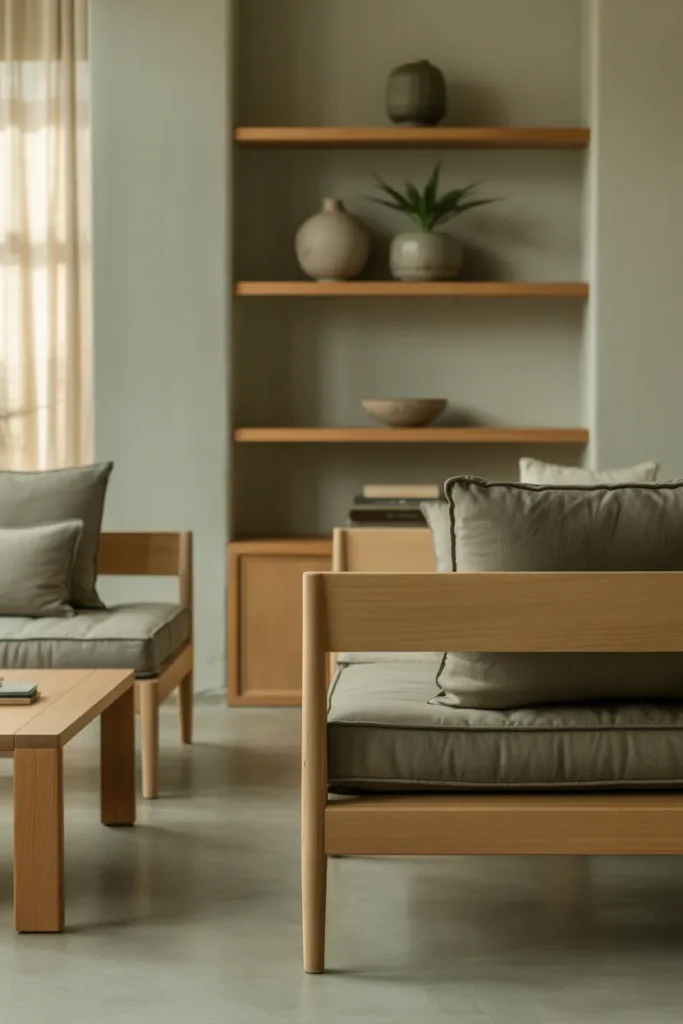
Gray adds depth to neutral Japandi interiors. It’s versatile, elegant, and perfect for grounding lighter tones like beige or white.
Use warm grays in fabrics and cool grays in accents to keep balance. Layer textures such as wool and linen to prevent the space from feeling flat. The result is quietly refined and timeless.
Functional Minimalist Layout
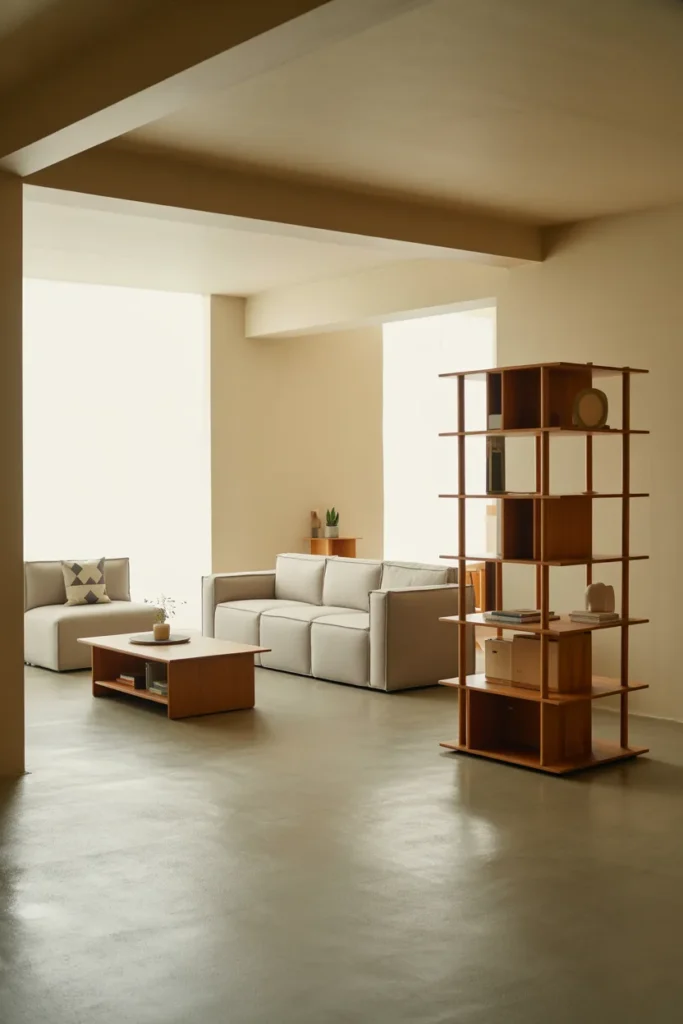
Japandi living embraces functional minimalism — every item serves a purpose. The clean arrangement helps reduce clutter and mental noise.
Opt for furniture with storage, floating shelves, and streamlined designs. Prioritize quality over quantity to achieve effortless calm and flow.
Warm Lighting Accents
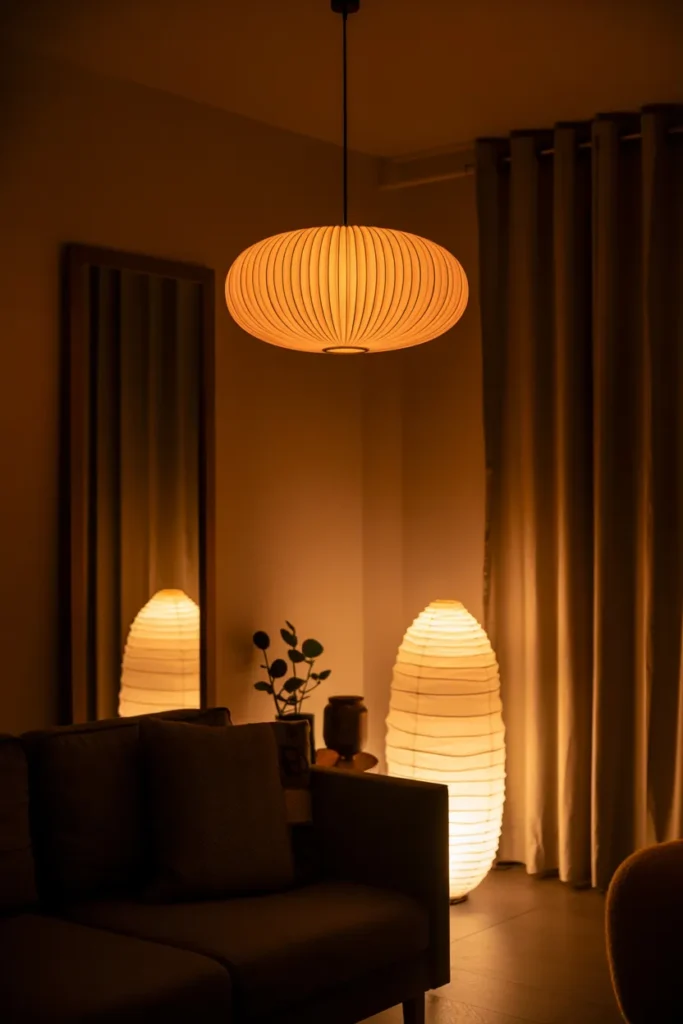
Warm lighting brings intimacy and comfort to minimalist interiors. It softens edges and enhances the natural colors that define Japandi design.
Use dimmable bulbs and soft shades to adjust the atmosphere. The right lighting turns even simple decor into something serene and welcoming.
Nature-Inspired Decor

Nature-inspired accents make Japandi interiors feel alive. The simplicity of organic shapes connects the room to the outdoors and enhances its grounding effect.
Decorate with handcrafted ceramics, driftwood, or bamboo trays. Keep arrangements simple and natural — asymmetry adds charm and authenticity.
Muted Pastel Accents

While Japandi spaces often use neutrals, muted pastels can introduce gentle personality. Blush, sage, or powder blue tones add quiet freshness to the room.
Use pastel accents sparingly — through throw pillows or ceramics — to maintain calmness. These subtle touches bring softness without straying from minimalism.
Wabi-Sabi Imperfections

Wabi-sabi celebrates the beauty in imperfection, a core idea of Japanese design. This living room embraces weathered finishes and organic shapes for genuine charm.
Incorporate handmade decor, raw edges, or patinaed metal. These details tell stories and add depth — proving that imperfection can be perfectly beautiful.
Monochrome Balance
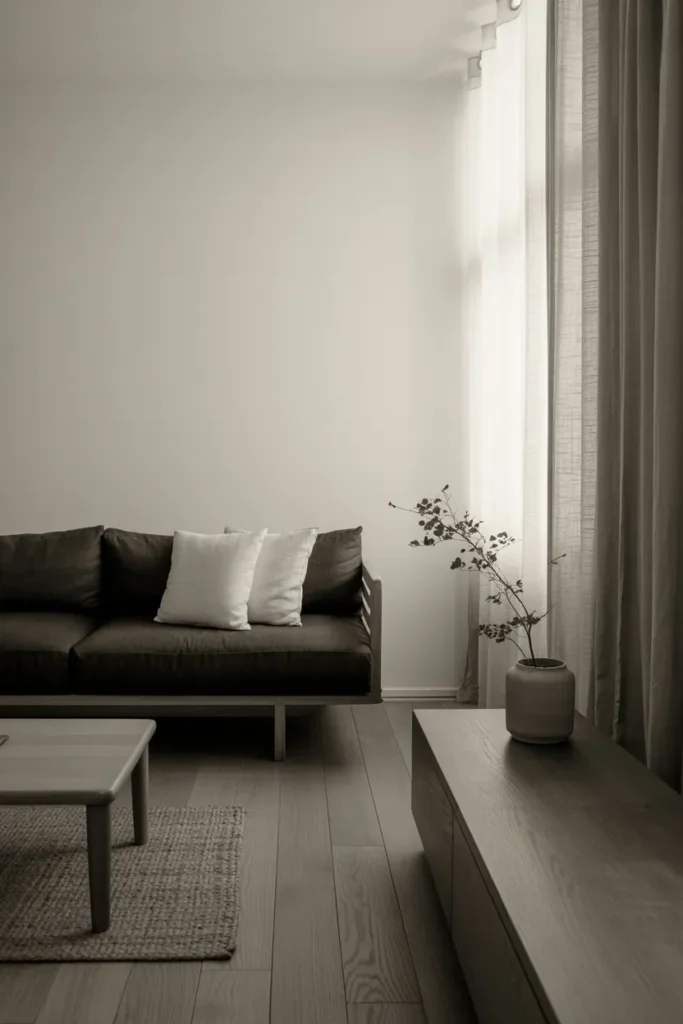
Monochrome palettes can feel sharp, but in Japandi design, they’re softened by texture and wood. The result is sophisticated, calm, and deeply balanced.
Combine matte black, warm white, and oak tones. Keep the layout symmetrical for visual flow. The look is simple, elegant, and endlessly modern.
Candlelit Evening Calm

Evening light transforms a Japandi space into a peaceful retreat. Candlelight enhances the textures of wood and fabric, evoking calm and warmth.
Use unscented candles in ceramic holders or stone trays. Pair with minimal lighting for a tranquil glow. This creates a restorative atmosphere perfect for quiet reflection.
Conclusion
Japandi living room design is more than a trend — it’s a lifestyle rooted in simplicity and calm. By combining natural materials, soft textures, and balanced minimalism, you can create a space that nurtures both comfort and mindfulness. Whether you start small or redesign completely, let these Japandi ideas guide you toward a peaceful home that feels intentional, elegant, and beautifully serene every day.

